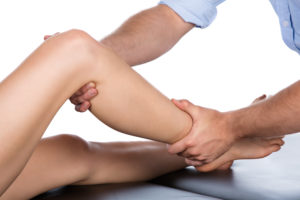 A Baker’s cyst is a fluid-filled cyst that will create a painful bulge and tightness behind the knee. If the patient extends the knee or flexes it fully or is active, the pain may worsen. Also known as a popliteal cyst, it often occurs because of a problem with the knee joint. For instance, a cartilage tear or arthritis can cause the knee to produce excess fluid, resulting in a Baker’s cyst.
A Baker’s cyst is a fluid-filled cyst that will create a painful bulge and tightness behind the knee. If the patient extends the knee or flexes it fully or is active, the pain may worsen. Also known as a popliteal cyst, it often occurs because of a problem with the knee joint. For instance, a cartilage tear or arthritis can cause the knee to produce excess fluid, resulting in a Baker’s cyst.
Swelling may occur due to the Baker’s cyst, and the patient will feel uncomfortable. But relief can be obtained if the probable underlying cause of the problem is addressed. Remarkable and adroit board certified orthopedic surgeons Dr. Steven Thomas and Dr. Gregory Bigler provide treatments for Baker’s cyst to patients in Las Vegas, Nevada, and surrounding communities across the horizon.
Diagnosing the Problem
A physical exam is usually enough to diagnose a Baker’s cyst. However, some of the signs and symptoms of this condition may be similar to other more serious conditions, such as a tumor, blood clot, or aneurysm. Therefore, the treatment provider may order non-invasive imaging tests, such as:
- Ultrasound
- X-ray
- Magnetic resonance imaging (MRI)
Treatment
In some cases, the Baker’s cyst may disappear on its own. But if the cyst is painful and large in size, the following treatments may be recommended:
Medication
Cortisone or another corticosteroid medication may be injected into the painful knee to reduce inflammation. This will provide relief from the pain, but the possibility of recurrence of the cyst still remains.
Fluid Drainage
The orthopedic surgeon may drain the fluid from the knee joint with a needle. This procedure is known as needle aspiration and is typically performed under ultrasound guidance.
Physical Therapy
Pain and swelling can be reduced with the help of ice packs, a compression wrap, and crutches. The patient may be instructed to perform gentle range of motion and strengthening exercises for the knee muscles. These steps can help to mitigate the symptoms and improve knee function.
Treating Underlying Conditions
Wherever possible, the surgeon will try to treat the underlying cause of the cyst for permanent relief. If the surgeon determines that overproduction of the synovial fluid is being caused by a cartilage tear, they may advise surgery to repair or remove the torn cartilage. If the Baker’s cyst has occurred due to osteoarthritis, it will often improve when the arthritis is treated. This condition rarely requires surgical intervention.
Baker’s Cyst Caused due to Arthritis
If the cyst has been caused by arthritis, the surgeon may recommend a few steps that can be followed at home. The first step is the RICE treatment, which involves rest, ice therapy, compression, and elevation. The patient can compression the knee with a wrap, sleeve or brace, and as far as possible, keep the leg in an elevated position at night.
Reduction of physical activity for some time may be advised. This will help to reduce irritation of the knee joint. During this period of reduced activity, the surgeon may also suggest alternative forms of exercise. Profound and sagacious board certified orthopedic surgeons at Thomas & Bigler Knee & Shoulder Institute receive patients from Las Vegas, Nevada and other cities and suburbs in this area of the southwest.
If you would like to schedule an appointment or learn more about the Knee and Shoulder Institute procedures & treatments performed by Las Vegas, Nevada board certified surgeons Steven C. Thomas, MD and Gregory T. Bigler, MD. call (702) 933-9393; Physical Therapy (702) 933-9393.
